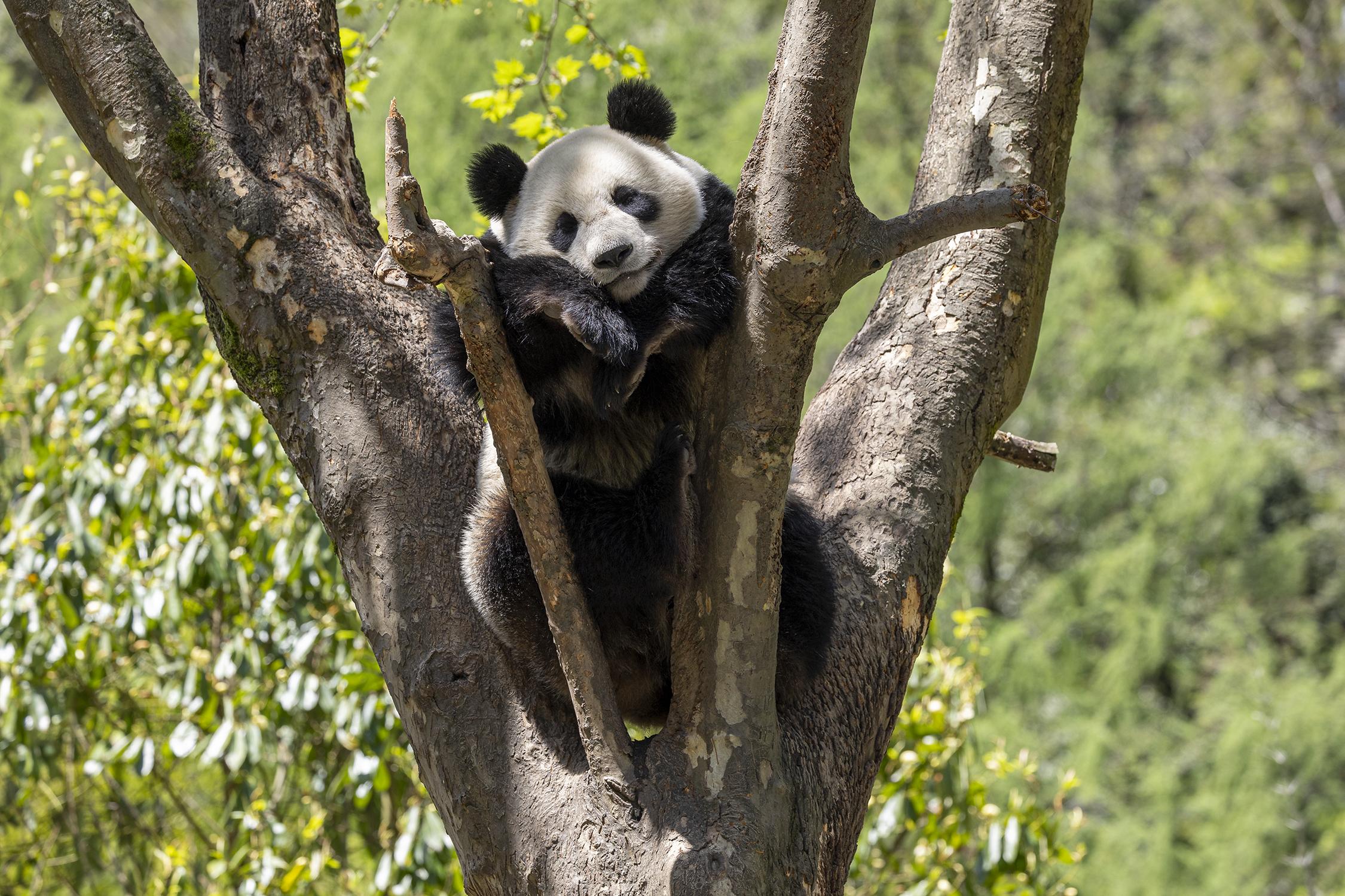
It only takes a moment to appreciate the wonder of nature. Every interaction we have with wildlife is a moment of discovery. And when we experience species like giant pandas, it opens up the world around us. We are all part of a vast, interconnected system that links us—and our future. This inherent bond illuminates a renewed understanding of how conservation protects the vital biodiversity we rely on to thrive.
San Diego Zoo Wildlife Alliance is honored to celebrate One Health Day. It is an opportunity for us to draw attention to the global challenges that impact us in so many ways, and how we must act quickly to conserve the planet we all share. We need a sustainable approach, one that is holistic and inclusive and reimagines outdated models. As we look to the future of our conservation efforts, we look to an approach that values species diversity, traditional ecological knowledge, and the role they play in maintaining functioning ecosystems for all life on Earth.
The heart of this approach lies in the interconnection of the health of wildlife, people, and the ecosystems we share. Now more than ever, we need to change our relationship with nature and restore the balance that benefits us all. Clean water, air, medicine, food—nature provides us with assets that sustain and enrich our lives. All of us—plants, animals, and people—live in diverse, complex environments that create a network of life that inextricably links us together.
So a threat to nature is inherently a threat to us as well. Population growth, pollution, and habitat loss have forced species into more crowded and fragmented ranges, increasing the risk of an emerging disease that could cause the next pandemic. The loss of species that pollinate and fertilize crops impacts our access to food, and unsustainable deforestation has contributed to climate change that affects our very way of life. We must appreciate the connection between biodiversity loss and how it affects our well-being.
This requires an evolving perspective of what successful conservation truly entails. Our global conservation work to understand individual species and their needs started many years ago. And the more conservation scientists learned, the more they began to focus on endangered species and how they could help those that faced the greatest threat to survival. Preventing species from going extinct is still the key to protecting and restoring biodiversity, but we now know that it is not enough. Species need to be viewed in the context of entire ecosystems to ensure truly comprehensive and sustainable solutions. It’s a dynamic approach that benefits wildlife species and the human communities that live alongside.
A shining example has been the care and conservation of giant pandas, who were first welcomed to the San Diego Zoo 30 years ago. During this time, we and our global partners have learned so much about how we can protect and care for them and their vibrant ecosystems. In the beginning, we knew little about panda behavior, reproduction, and diet, and we began the long and crucial journey toward understanding. Our collaborative approaches have evolved over time, and we’ve paired our initial discoveries with scientific studies of native habitat, climate, and their interconnection with other species. As a result, we have seen heartening advances in their ability to thrive. Their recent downgrading from endangered to vulnerable is a sign that through our collective conservation efforts, we are on a path toward long-term success.
With the arrival of Xin Bao and Yun Chuan at the San Diego Zoo, our scientists and wildlife experts look forward to working alongside our Chinese conservation partners as they increase vulnerable panda populations and support sustainable solutions for their ecosystems. This includes advancements in biodiversity monitoring and environmental DNA analysis to better understand native habitats, leveraging trail cameras and acoustic sensors illustrating how pandas move and interact with their environment, and continuing reintroductions, which have already shown promising results in their recovery.
Our work is always evolving, which makes collaboration essential. Xin Bao and Yun Chuan mark the beginning of a new chapter with our partners as we share decades-long expertise in panda science, health, behavior, and habitat recovery. These partnerships are at the core of our Alliance and key to the relationships we build worldwide with local communities, Indigenous peoples, and partner organizations across our eight Conservation Hubs. When everyone has equity in these spaces, everyone benefits, and biodiversity loss can be halted.
Each of us is part of the solution. When people connect with wildlife like Xin Bao and Yun Chuan, they become allies in conservation and the crucial work we do each and every day. It’s a reminder this One Health Day that we all play a vital role in protecting the world’s biodiversity, and that by working together, continued hope for wildlife, people, and our planet is possible.




